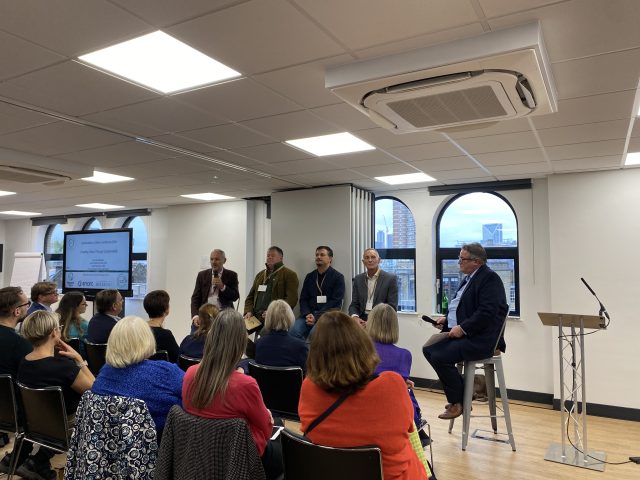Is complicated rhetoric sustainability’s biggest enemy?
By Eloise FeildenTalk of sustainability inevitably returns to one key question — how do we bridge the gap in consumer understanding? Panellists at this week’s Sustainability in Drinks conference grappled with how to shape green messaging. Eloise Feilden reports.

“We are all in the same sinking ship,” Master of Wine Jancis Robinson OBE said in her keynote speech at yesterday’s conference in London. Perhaps a gloomy message to lead with, but an important one — one which reminds businesses that the solution lies in collaboration.
Discussions among panellists, who spanned corners of the industry from wine production to glass bottle manufacturing, continually returned to the issue of consumer understanding and sentiment. Consumers, whose buying choices decide the fate of the wine and spirits industries, are often tasked with filtering through a mountain of complex technical language in order to understand the environmental sustainability of a product — a task few actually take on.
With 84.6% of the UK population now living in urban areas, the gap between consumer and producer is also widening. Stephen Cronk, founder and CEO of Maison Mirabeau, said during the panel discussion: “A lot of people aren’t aware of what’s going on in the farms, and so to try and educate city dwellers about the complexity of farming is difficult.”
Cronk described the current certification climate as the “Wild West”, explaining that for regenerative viticulture alone, there are 10 different certification agencies in operation, making the messaging to consumers even more convoluted.
Doug Wanstall, head of projects at Beyond Zero, a UK-based environment asset manager, argued that responsibility for clear messaging lies with businesses themselves. “The consumer’s failure to understand is our failure to communicate, and we need to get better at it,” he said. “Every consumer can make an informed decision every day, and we are responsible for communicating why they should be making better decisions.”
Partner Content
So how can businesses up and down the supply chain tackle consumer understanding, or lack thereof?
As Robinson noted, while consumers have a vague idea of what organic means, the average consumer’s understanding of biodynamics is significantly lower.
Phrases like “living soils” are more consumer-friendly than “regenerative”, she argued, being less technical. Talk of biodiversity, too, helps engage the end consumer “because they understand what it means”.
Brands and businesses need to strike the right balance. Cronk admitted that it’s hard to bring these discussions to the consumer when you’re positioned as a lifestyle brand from Provence — it’s a question of how to tell the story “without being preachy”.
The solution, Cronk argued, is for businesses to be consistent in their language. For him, that means universal use of the word ‘regenerative’, as that is what appears on the final label. “There are so many variations on a theme, so I think we have to get behind one single word,” he said.
Related news
South Africa makes strides in sustainability




